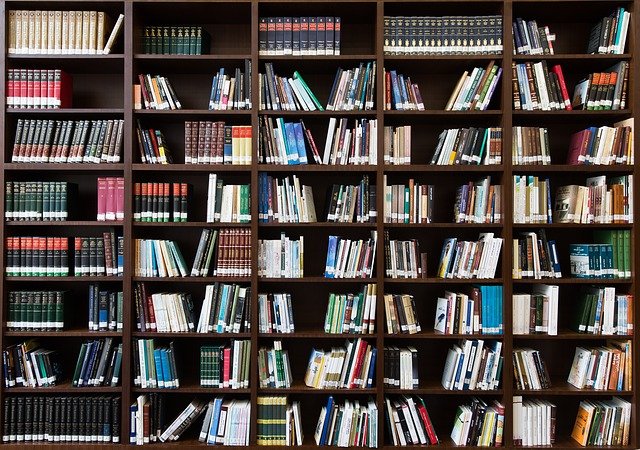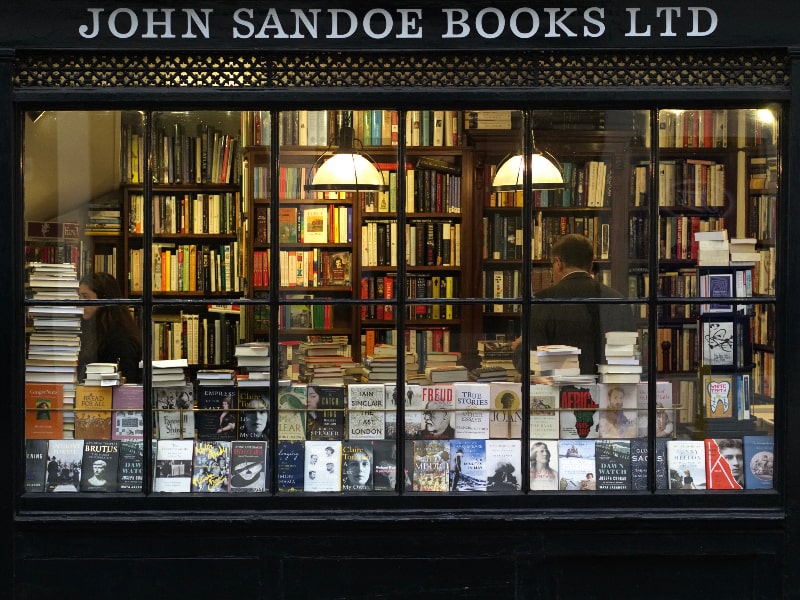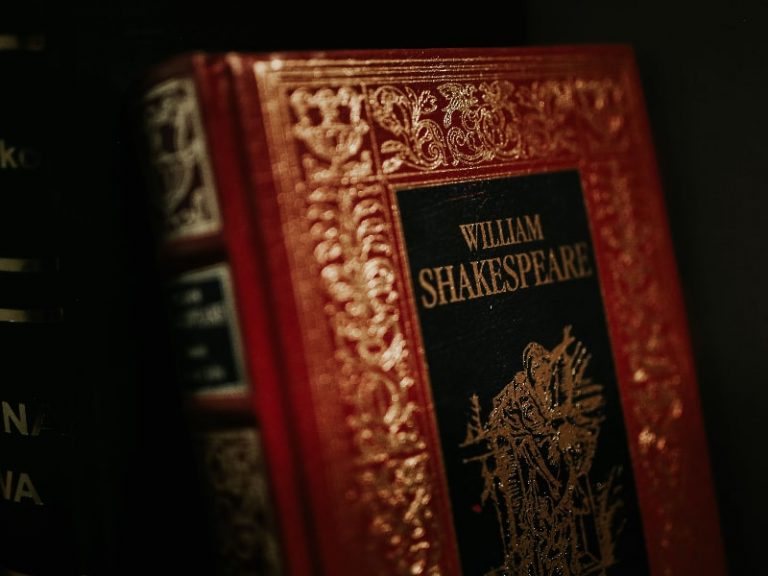Definition and characteristics of literary movements
Contents
Definition of literary movements
Literary movements are defined as a set of characteristics applied to the form of writing, the subject matter and focused on a series of conditions immersed in a given era. Thus, a movement can remain during one or several epochs.
What are literary movements?
One of the most discussed terms on the classification of literature is related to literary movements, within which currents are also mentioned and which in many cases have been unified. However, it is possible to distinguish the currents as part of the literary movements, being one of the classifications that has allowed artistic expression over time.
Thus, literary movements can be defined as aesthetics and trends that record the historical development of literature, since it exposes the literary trends that have taken place in its evolution and that emerge from different times and places in the world. Their knowledge is necessary as an integral part of the universal history of literature, since they mark important influences and reactions for posterity.
In this way it is possible to identify literary movements that give rise to other trends, such as the avant-garde and literary currents, following their classification.

Main characteristics of literary movements
Let’s see below a series of features that will allow us to understand the reason for the movements in this artistic expression, their formation over time and the way in which they have developed:
Distinction of meaning
One of the most important aspects of literary movements is that they are endowed with a particular meaning, so that there is no one like another. This is due to many factors that dialogue in the process, such as the context, artistic influences, collective and individual thought, the spirit of the time, among other aspects.
Very close to the previous element, what allows the emergence of these trends and their subsequent transformation into literary movements is precisely the way in which the authors and their works coincide. The strength of the movements is determined, in many cases, by the principles, interests or foundations shared by the authors and thus begins to develop in literature, generating a greater diffusion through its influence.
However, it is important to mention that these shared elements do not necessarily imply a knowledge of each other or even an equal place of location, as in fact many develop and manage to classify themselves based on the characteristics shared with authors from other times and places.
Influence of other arts
We will see that a large part of the literary movements that it is possible to identify, emerge at times when there was an artistic flourishing in other areas, which is why in the emergence of them we must make the distinction between one field and another. In this sense, many of the movements and at the same time, currents and avant-gardes, were accompanied by the development of other arts such as painting, music or poetry.
Unlimited temporality
As we anticipated, literary movements are not subject to a strict timeline whereby it is only possible to stick to the past, but the same author can even be present within a literary movement and progressively participate in another and even inaugurate a new movement or current. That is why throughout the history of literature we can see literary texts that, in different periods, may coincide with characteristics of previous movements and are classified within them.
Classification of literary movements and currents
Now, taking into account the complexity of this distinction in this artistic field, we will review how they are classified, an aspect that has also been a source of discussion. In this case, we will talk about literary movements that obey wider contexts and developments, and their branches, and then about literary currents, also known as literary schools or literary phenomena.
Here we find the main literary movements:
Classicism literary movement.
Born in: Ancient Greece and the Roman Empire.
Period: 5th century BC to 5th century AD.
This movement is developed in ancient Greece and will focus on laying the first foundations and elements of what will become literature, which is why it is considered of such importance.
Its most important aspects go in accordance with the harmony and balance that prevails in its forms.
Most important authors: Homer, Sophocles, Virgil.
Most important works: The Iliad, The Odyssey, The Aeneid, Oedipus Rex.
Medieval literary movement
Born in: Europe and major kingdoms .
Period: 5th to 15th century .
It is important to highlight it because it is divided from classicism, since in this movement they begin to approach own themes within the Middle Ages, and in this area the gaze is fixed on aspects such as religion, God and heroes.
In this movement in particular, the importance of heroic figures is evidenced and literature will focus on the great kings and chivalric heroes.
Most important authors: anonymous authors.
Most important works: The Song of the Nibelungs, Book of Good Love, The Song of Roland and Mio Cid.
Renaissance literary movement
Born in: Western Europe.
Period: 14th century and 16th century.
During this time a sentiment is born that looks back to Greco-Roman antiquity and, although it does not properly return to its forms, it will take it as a source of inspiration for many of its works, although without neglecting the innovation that it will begin to propose for its development.
This movement observes the classical cultures as exact moments in which the supreme realization of an ideal within perfection is reached, given that it is a rebirth and a return of the gaze to the ideals that inspired these peoples so much.
Most important authors: Dante, Bocaccio.
Most important works: The Divine Comedy, The Decameron.

Baroque literary movement
Born in: Europe, Spain especially
Period: XVII century
This movement is considered an extension of the Renaissance literary movement, which developed mainly in Spain. This is because it continues with airs linked to classicism and many of its inspiring forms as in the Renaissance, although with the difference of the incorporation of literary forms of greater complexity.
In the literary field, baroque art gives life to two very important schools within its development, which will be the culteranismo with the tendency to a poetic art that lacks refinement but in which metaphors, cultisms, mythological allusions and images abound. And the second, conceptismo, in which there is a tendency to the use of concepts of greater depth, expressed mainly in prose.
Most important authors: Luís de Góngora, Francisco de Quevedo and Francois Rabelais .
Most important works: Gargantua and Pantagruel, The Seeker and Fable of Polyphemus and Galatea.
Neoclassicism Literary Movement.
Born in: France
Epoch: Age of Enlightenment, XVIII century
It was characterized for being a movement with a strong obsession for the forms. This movement was born in a decisive moment with the court of the king of France, Louis XIV, since he chose to possess the artistic, spiritual and intellectual power in the court of Versailles. By this time, the French language began to dominate in different parts of the world. It is considered a reaction to the excesses that baroque was promoting, so it seeks balance and a restraint of classicism in its expressions.
As for the characteristics that stood out in literature, it is possible to identify the frequency of resorting to the admiration for models belonging to Ancient Greece, reason to which it owes its name, as well as an admiration for Renaissance creation. A rigid correction about the art of writing is developed, they try to approach rationalism through literature, rigidity and symmetry prevail and the operation of strict rules for the elaboration of each of the works continues.
Most important authors: Roseeau, Racine, Moliere, Daniel Defoe, Rafael Landívar, Moltiere, Montesequieu and Fernández de Moratín.
Most important works: El Ávaro, El discurso del método, Andrómaca, El sí de las niñas, Rusticatio Mexicana and Emilio o la Educación.
Literary movements of Romanticism
Born in: England and Germany
Period: First part of the XIX century
It is a movement born with the vestige of the French Revolution, so it brings with it the ideas of freedom that characterize this movement and that will be the basis for the birth of the Romanticism movement. Although the ideas also emerge in the scientific field, it is in the literary artistic field where they will take much more strength, since it focuses on a look, also, to the medieval past.
Regarding this area of literature, in particular, the existence of the “I” is highlighted, there is a look that questions the rigidity of the rules, it is sponsored by a feeling and spirit of rebellion, feeling prevails over reason and there is an important admiration for freedom and nature. Imagination predominates.
Most important authors: Lord Byron, Duke of Rivas, Victor Hugo, Gustavo Adolfo Becquer, Edgar Allan Poe, Emily Bronte, Wolfgang Goethe and Friedrich Schiller.
Most important works: El ser de la libertad humana, Rimas, Werther, Don Álvaro o la fuerza del sino and Los Miserables.
Realism literary movement
Born in: France.
Period: second half of the 19th century.
This movement also arises in France and it is due to the moment in which it arises that it looks for new forms that allow it to be able to explore reality. This is the reason why realism as a literary movement has been a direct reaction against romanticism, in addition to the excess of subjectivism. Realism is deeply related to positivism as an ideological movement.
The works that emerge in this movement stand out for being an exact reproduction of reality, a colloquial language is used since the works are reproduced with the speech used in everyday life. On the other hand, there is a strong rejection of the feeling the human being, the use of descriptions is extremely reduced and concrete, besides being focused mainly on details related to the way of life of people, the environment, the problems and characteristics of their cultural and social customs.
Most important authors: Dostoevsky, José Camilo Cela, Stendhal, Oscar Wilde, Henry Ibsen, Flaubert, Benito Pérez Galdós, Charles Dickens, Edmundo de Amicis, Tolstoy and Bernard Shaw.
Most important works: Crime and Punishment, A Doll’s House, Marianela, The Family of Pascual Duarte, The Lady of the Camellias and Red and Black.
Literary movement of Naturalism
Born in: France.
Period: End of the XIX century.
It is another of the schools born in French territory, although this one begins at the end of the 19th century, unlike previous literary movements. One of the faculties that gives life to naturalism as a movement has to do with the step it makes from writing to the stage, since it makes a leap from the novel to the theater. Naturalism is often considered a kind of extension of the realism movement, due to the characteristics they share.
The key aspects within literature have to do with the description of natural laws, which are carried out as they are within the field of science, an aspect that links it to realism. On the other hand, there is also evidence of an attempt to reflect reality, however, the way in which this is done is linked to a much more objective look compared to other movements. Within the narrative, advances in science such as the creation of vaccines against diseases and discoveries are presented.
Most important authors: Emilio Zola.
Most important works: Nana.
Modernism literary movement
Born in: Nicaragua, Colombia, Cuba, Peru and Mexico.
Period: end of the XIX century and beginning of the XX century.
It is a movement that also opposes the vision and proposal launched by romanticism, which will go against its approaches and regulations that apply both to the field of poetry and narrative. This is how modernism, as a literary movement, will focus on a profound renovation. This movement is the first born in the American continent and is characterized by its authenticity, since it does not imitate any other movement born in Europe, although it is recognized that it is influenced by Rimbaud with Parnassianism and symbolism with Baudelaire. It will have influence in Europe.
On the other hand, modernism will exalt the renovation given the nonconformity with the repetition of the European and Spanish antecedents, especially. From his influences, he will take from Parnassianism the exotic and from symbolism the musicality for his works. He will use a language that lacks elegance, increase symbols and images in his works, in addition to taking as recurring themes the result of the view of the landscape of the American continent and its environment.
Most important authors: Rubén Darío, Arthur Rimbaud, Charles Baudelaire, José Martí, Amado Nervo, Enrique Gómez Carrillo, José Santos Chocano, Gabriela Mistral and López Velarde.
Most important works: Las flores del mal, Azul, Tres novelas inmorales, Iluminacione, Desolación, Soy un hombre sincero and Prosas profanas.

Vanguardism literary movement
Born in: Europe, later in the Caribbean of the American continent.
Period: First and Second World War, 20th century.
It emerges and develops between 1914 and 1918. It is also known as the Vanguards and is used to denominate the movement in head in which other fields and currents that have in common the same suffix “ism” emerge, among which we find: Dadaism, Futurism, Surrealism, Expressionism xxx.
These movements are focused on a complete renovation of art, but in particular of literature, in which the search for originality remains based on symbolism with a subjective and individual view.
Particularly, avant-gardism is going to be characterized by the rejection of rhetorical forms, emphasizing images that highlight feelings, the search for freedom and expression is intensified, especially, as well as its themes will often be different from those of previous movements but modified in their particular currents.
Most important authors: Albert Camús, Pablo Neruda, Franz Kafka, Nicolás Guillén, Rainer María Rilke, César Vallejo, André Bretón, Rolando Castellanos, Filipo de Marinetti and Federico García Lorca.
Most important works: La metamorfosis, Romancero gitano, Manifiesto futurista, El extranjero, Poesía afroantillana and Versos de amor y esperanza.
Post-avant-garde literary movement
Born in: first and second world war, 20th century
Epoch: mid-twentieth century
After the Second World War, there came a time of pessimism that was able to prevail all over the world, and in fact, it is considered to be its most important cause. Thus, in its development it receives several influences, among them by Marxist theories, which questioned whether or not to include reality in art, a process that reduced the quality of literature. However, it is literary aesthetics that reaches, like reality, a very important level.
In this sense, post-avant-gardism as a literary movement, is characterized by the profound rejection of optimism as an idealistic element to which avant-gardism points and in it, the currents that emerged, which, through poetry, sought to be able to evade reality.
Most important authors: Nicanor Parra, Ernesto Cardenal.
Most important works: Antipoetry, Epigrams.
Postmodernism literary movement
Born in: America
Epoch: late twentieth century
It is a literary trend and movement that after the leap of avant-gardism, continues its development at the present time. It begins with the exhaustion of the forms and themes that had been incorporated into the literary field.
In this way, in postmodernism, the emerging authors begin to use other resources that are adhered to the exercise of writing, it is mainly characterized by the exploration and experimentation of new literary forms that had nothing to do with the traditional forms with which all the previous movements came at the time.
Most important authors: Julio Cortázar, Augusto Monterroso, Umberto Eco, Guillermo Cabrera Infante.
Most important works: Lo demás es silencio, Rayuela, En el nombre de la rosa and Tres tristes tigres.
Literary currents
In this second division we find a series of trends, as they are also known, which developed mainly in short periods but were fundamental for the progress of the literary world in different parts of the world.
To learn more about each of the movements, remember that you can go to each of the corresponding sections. If you want to learn more about other aspects of literature, in our main section you can easily access to continue learning about the literary world.
